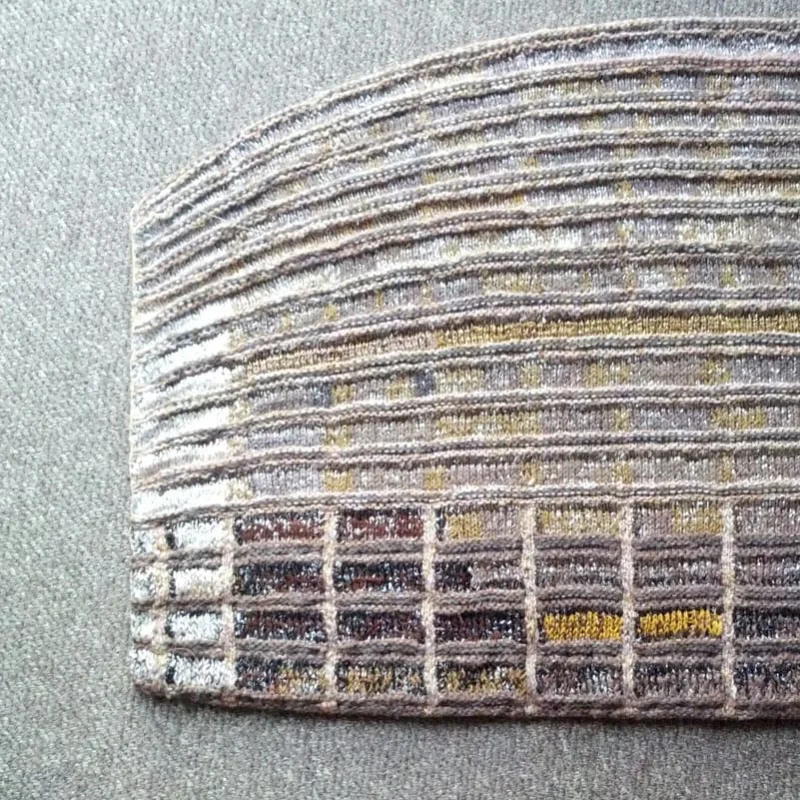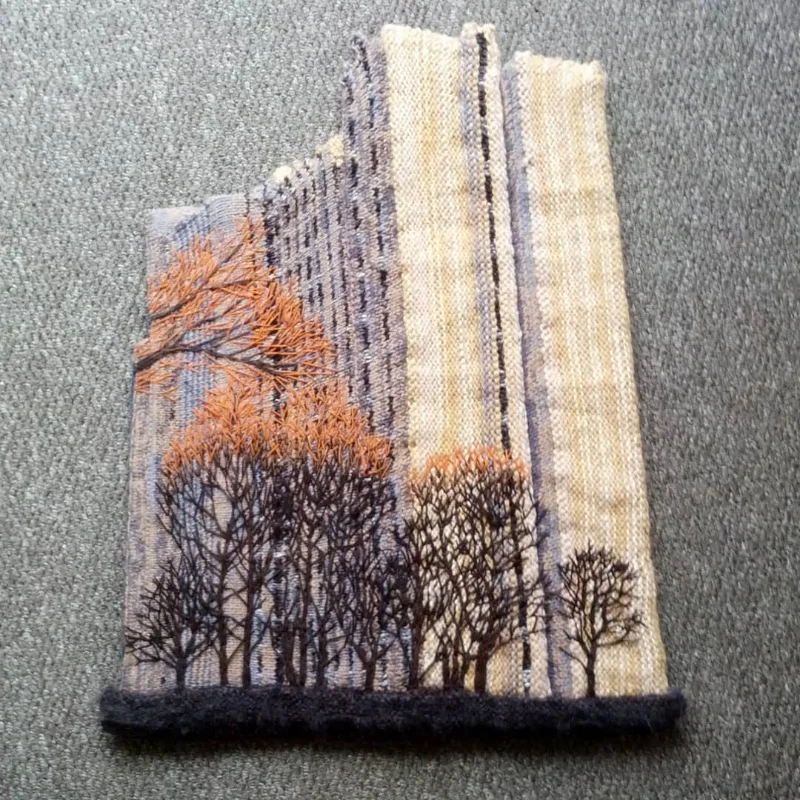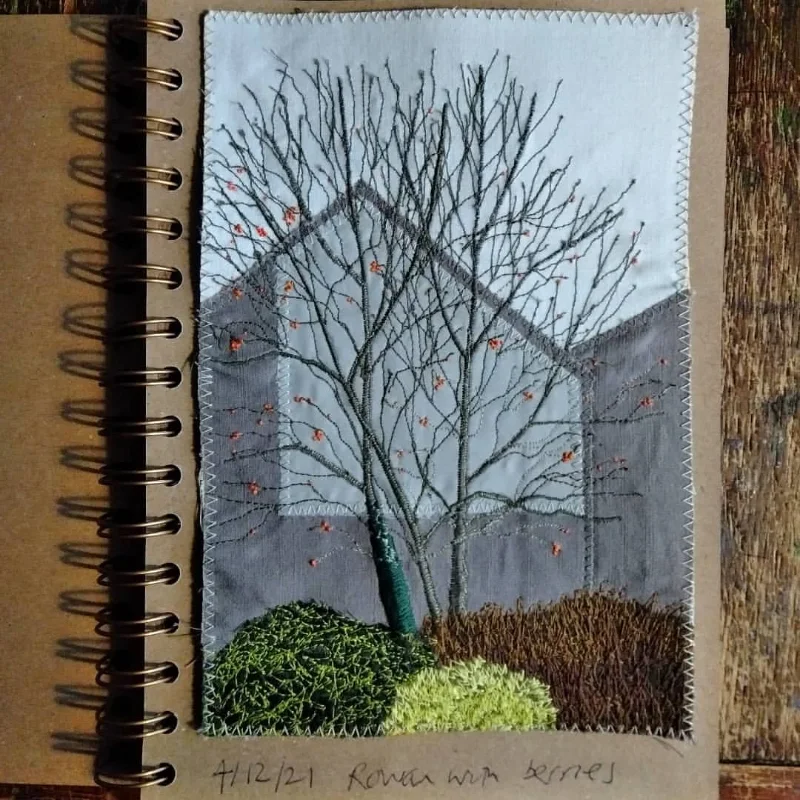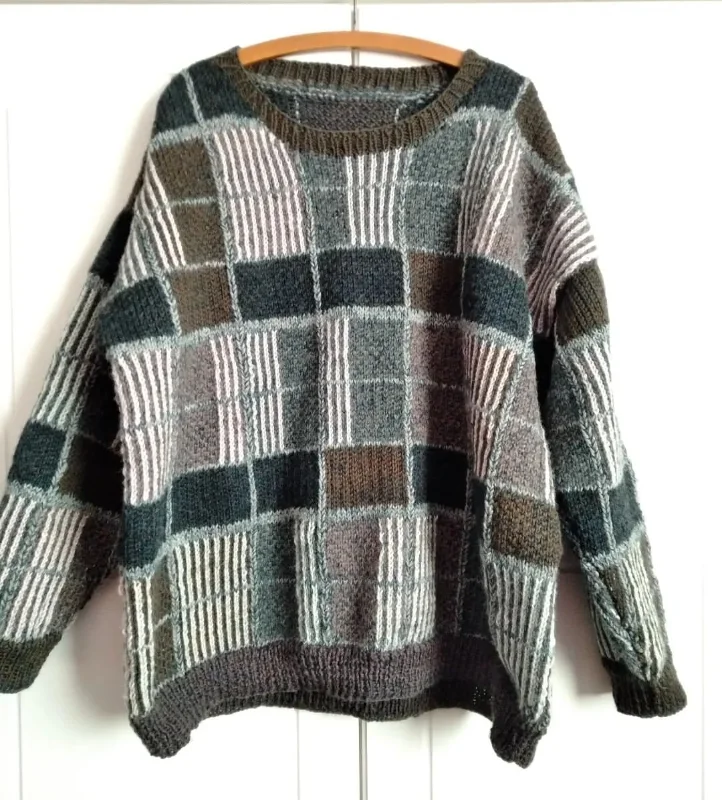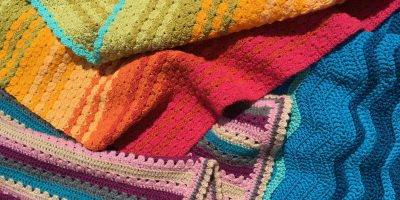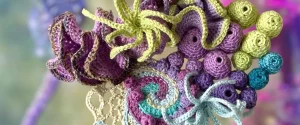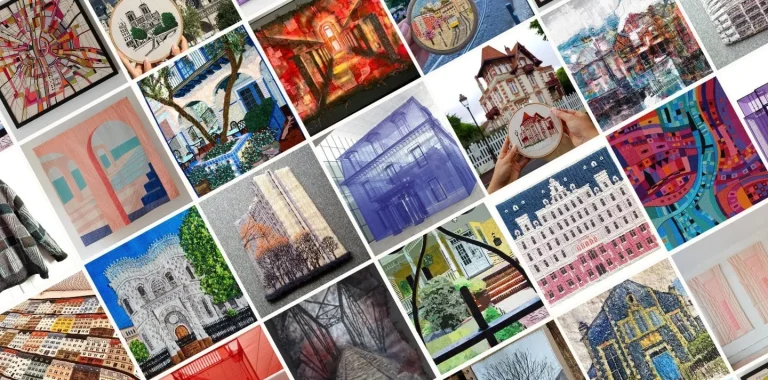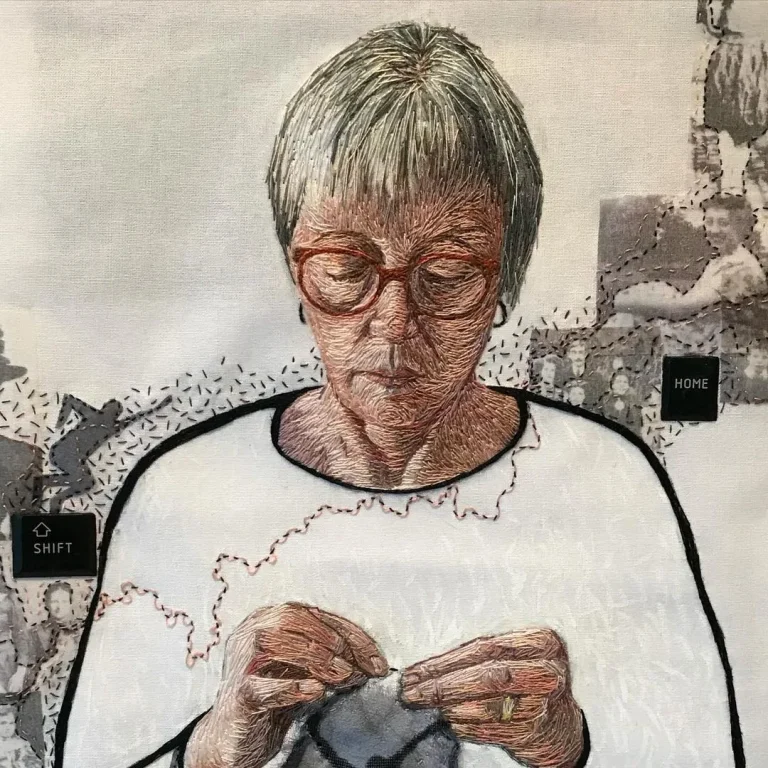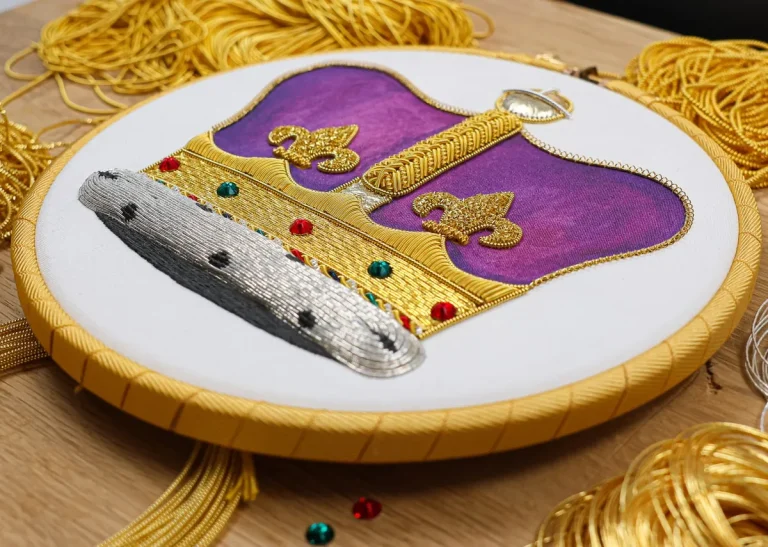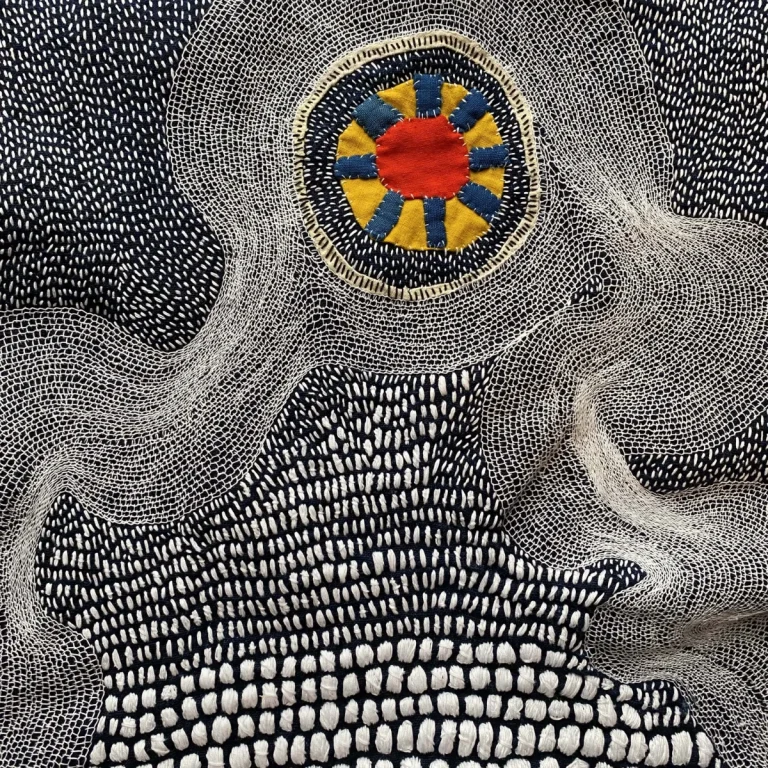Welcome to our exploration of the fascinating world where architecture meets textiles—a realm where creativity, craftsmanship, and the allure of architectural forms converge in stunning textile artworks. In this blog, we delve into the textile art world to bring you 10 textile artists inspired by architecture.
Whether you’re a seasoned textile artist seeking fresh inspiration or a budding crafter eager to explore new techniques, our journey into the world of textile artists inspired by architecture promises to ignite your creativity. Discover their inspirations, learn about their techniques—from quilting and embroidery to knitting—and uncover the stories behind their key achievements.
Join us as we unravel the threads that connect architecture and textiles, offering insights, tips, and a wealth of inspiration to fuel your own artistic endeavours. Whether you’re drawn to the structural elegance of buildings or the tactile allure of textile artistry, there’s something here for every maker, crafter, and creative soul.
Let’s embark together on this textured adventure where art meets architecture in the most unexpected and beautiful ways.
Before we start...
Don’t forget to check out our other blogs in the Artists you Have to Follow Series.
- 9 Textile Artists Inspired by Food
- 10 Textiles Artists Inspired by the Ocean
- Textile Artists Inspired by Nature
- 10 Textile Portrait Artists
- 10 Contemporary Felt Artists
- Machine Embroidery Artists You Have to Follow
- Hand Embroidery Artists You Have to Follow
- Inspiring Patchwork Quilt Artists You Have to Follow
- Inspiring Knit Artists You Have to Follow
10 Textile Artists Inspired by Architecture
1. Ruth Norbury
Ruth Norbury is a talented embroidery artist whose work delves into themes of decay, abandonment. Drawing inspiration from industrial metal music and abandoned buildings, Norbury’s creations evoke a sense of unease, as if hiding from a childhood fear. Her unique approach transforms traditional embroidery into explorations of post-apocalyptic worlds, provoking thought and introspection.
Norbury’s fascination with Gothic Decay led her to move away from her earlier, more conventional bird-themed embroideries. She began experimenting with reclaimed fabrics, including vintage linens and personal items like prayer flags from her canal boat, imbuing her work with a sense of history and past lives. Her innovative use of materials and techniques—such as hand and machine embroidery, appliqué, stencilling, and dyeing—allows her to create richly textured and visually compelling pieces which often focus on architecture and structures.
Despite the initial fear of how her audience would react to her new direction, Norbury’s bold shift has been met with enthusiasm and has garnered a dedicated following. Her works, such as My Damaged Dreams and Compliance, are characterised by their dark, grungy aesthetics and meticulous craftsmanship, often combining traditional hand embroidery with modern, experimental elements.
Norbury also shares her expertise through workshops, inspiring others to explore their creativity and embrace their unique artistic voices. Her journey from a conventional artist to a creator of Gothic Decay art is a testament to her determination and passion for self-expression, making her a notable figure in contemporary textile art.
Follow Ruth Norbury
Website: https://www.gothicdecay.com/
Instagram: https://www.instagram.com/gothicdecayart/

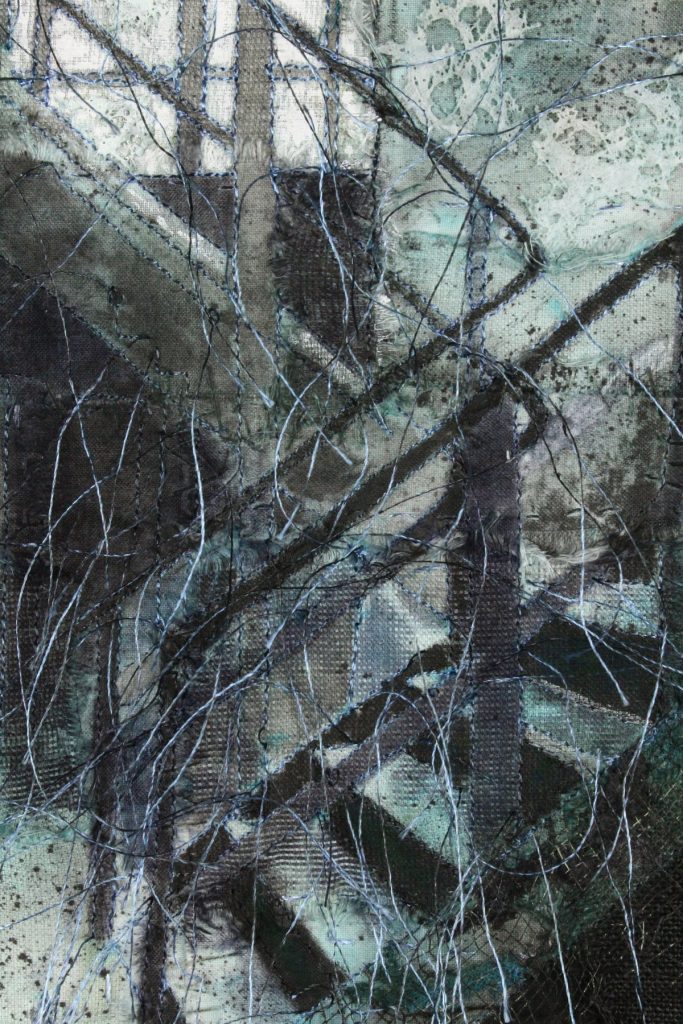
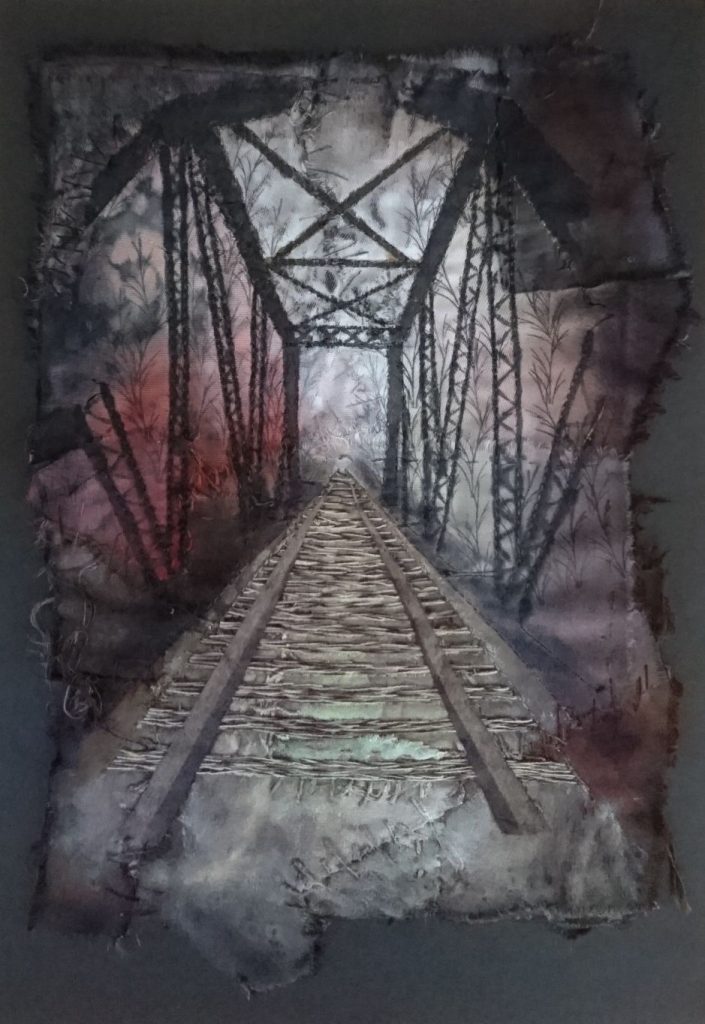
2. Jake Henzler
Jake Henzler is a creative knit artist celebrated for his imaginative designs inspired by architecture and vibrant cityscapes. Originally from Australia, Henzler’s journey into knitting began with designing and publishing patterns for whimsical story characters, which quickly gained popularity in the knitting community. His knack for combining storytelling with intricate knitting techniques caught the attention of Australian Country Spinners, leading to the publication of his booklet “Little & Friends.”
In 2017, Henzler embarked on a transformative journey to Copenhagen, where he took a break from his teaching career to immerse himself in the city’s rich architectural tapestry and colourful yarn selections. Struck by the painted buildings and the diverse range of cotton colours at Søstrene Grene, a local homewares chain, he was inspired to create something special to commemorate his time there.
This inspiration led to the creation of his renowned “Copenhagen Building Blocks” pattern—a testament to his meticulous approach and dedication to capturing the essence of Copenhagen’s architectural charm in knitted form. The pattern, which intricately details iconic buildings and city facades, has not only been a hit among knitters but has also been adapted into various garments and accessories, including a housecoat and socks.
Henzler’s creative process involves meticulous planning and experimentation with different yarns and dyeing techniques to achieve the perfect colours and textures that bring his architectural visions to life. His use of piecing rather than appliqué in his designs showcases his craftsmanship and attention to detail, making each piece a work of art in its own right.
Beyond his personal projects, Henzler finds joy in sharing his patterns and skills with the knitting community through platforms like Ravelry and Instagram. Seeing others interpret and adapt his patterns to create their own unique interpretations has been a rewarding aspect of his artistic journey.
Follow Jake Henzler
Ravelry: https://www.ravelry.com/patterns/sources/boy-knits-world/patterns
Instagram: https://www.instagram.com/boy_knits_world/
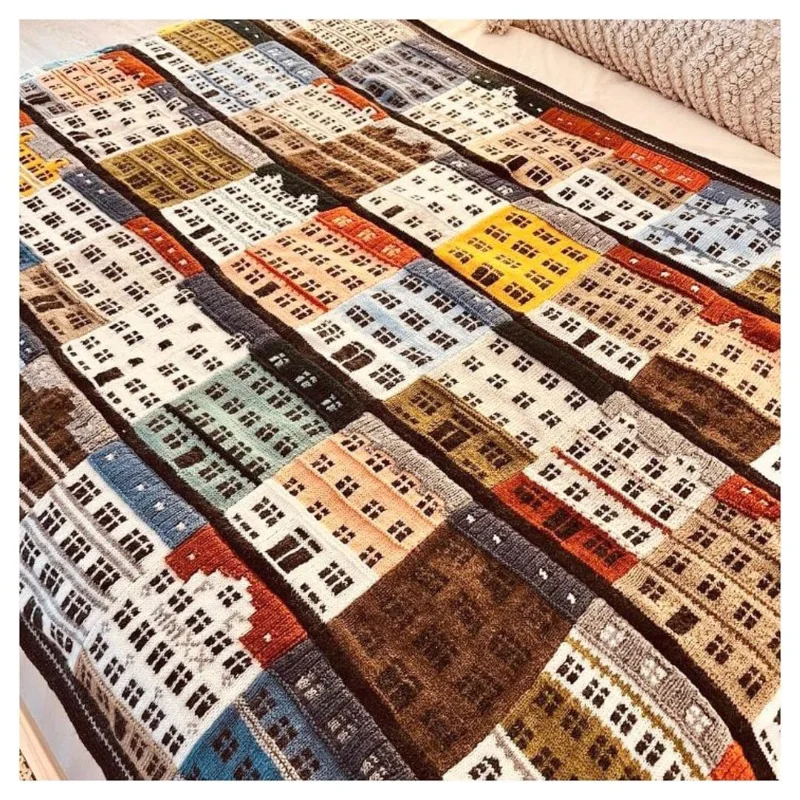
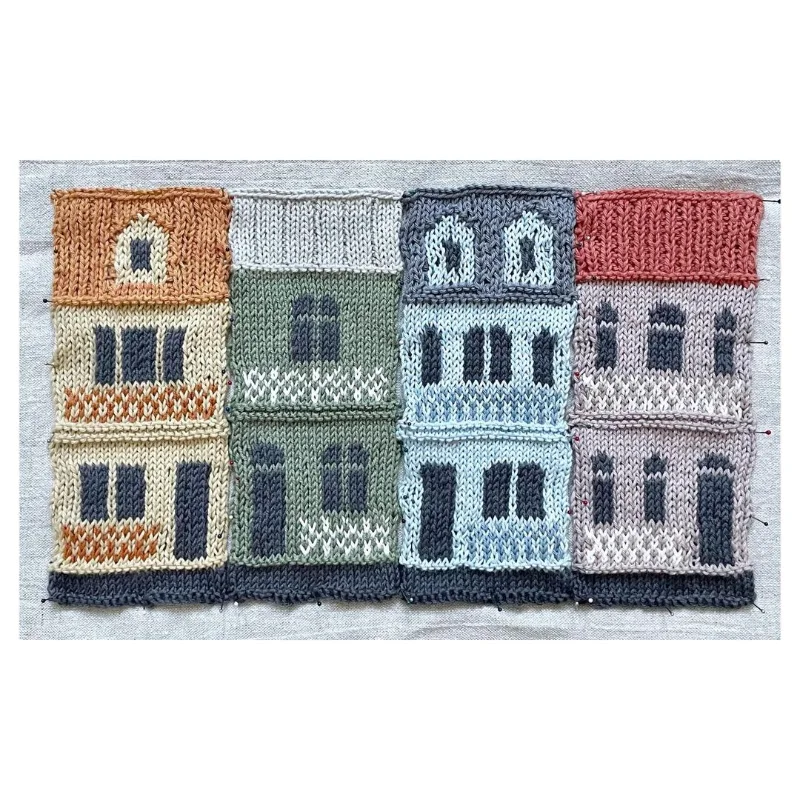
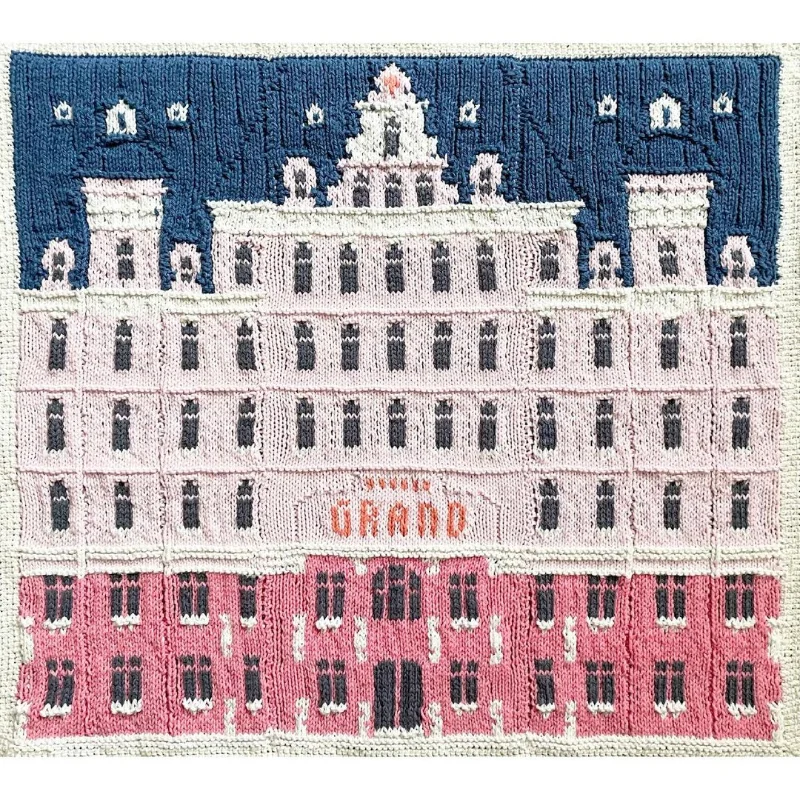
3. Haf Weighton
Haf Weighton is a distinguished Welsh-speaking textile artist renowned for her unique blend of paint, print, and stitch. Her work, celebrated for its intricate portrayal of architectural forms, encapsulates her deep connection to both local and distant places. Weighton’s journey into the world of architecture-inspired art began in childhood, influenced by her father’s handmade playhouses and early school projects involving stitched houses. This early fascination evolved into a lifelong passion, culminating in her degree show, which prominently featured painted and stitched architectural themes.
Throughout her career, Weighton has exhibited her work widely, including prestigious venues such as The Saatchi Gallery in London. Her pieces are characterized by richly detailed surfaces and a vibrant mix of techniques, starting with observational drawings that capture the essence of everyday life. Using Photoshop to manipulate images, she transfers them onto painted backgrounds using printmaking techniques, and enhances them with machine and hand-stitching.
Weighton’s accomplishments are numerous. She has held solo exhibitions at notable venues including Alexandra Palace, Penarth Pier Pavilion, and Y Galeri in Caernarfon. Her expertise extends beyond creating art; she is an experienced art educator and workshop facilitator, contributing to the creative development of schools in Wales through The Arts Council of Wales’ Lead Creative Schools Projects. As a juried member of the Society for Embroidered Work and the Society of Designer Crafts, Weighton continues to inspire and shape the textile arts community. Her work not only reflects her personal history and travels but also celebrates the architectural heritage and everyday beauty of the places she holds dear.
Follow Haf Weighton
Website: https://hafanhaf.com/
Instagram: https://www.instagram.com/Hafweightonartist
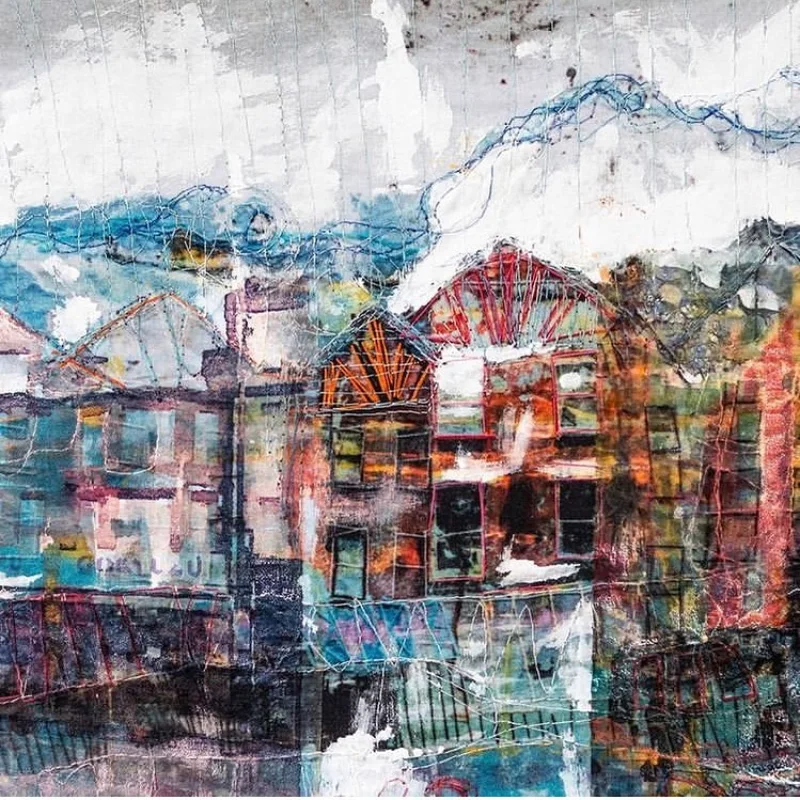
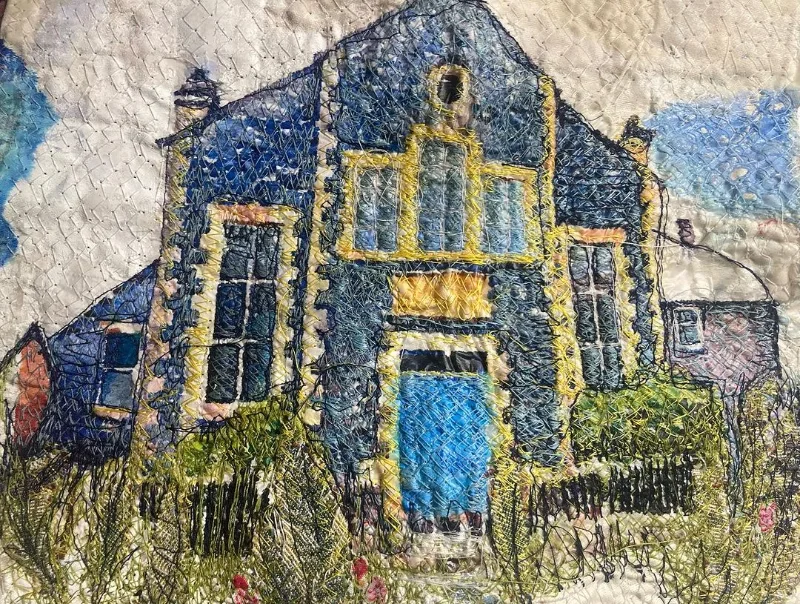
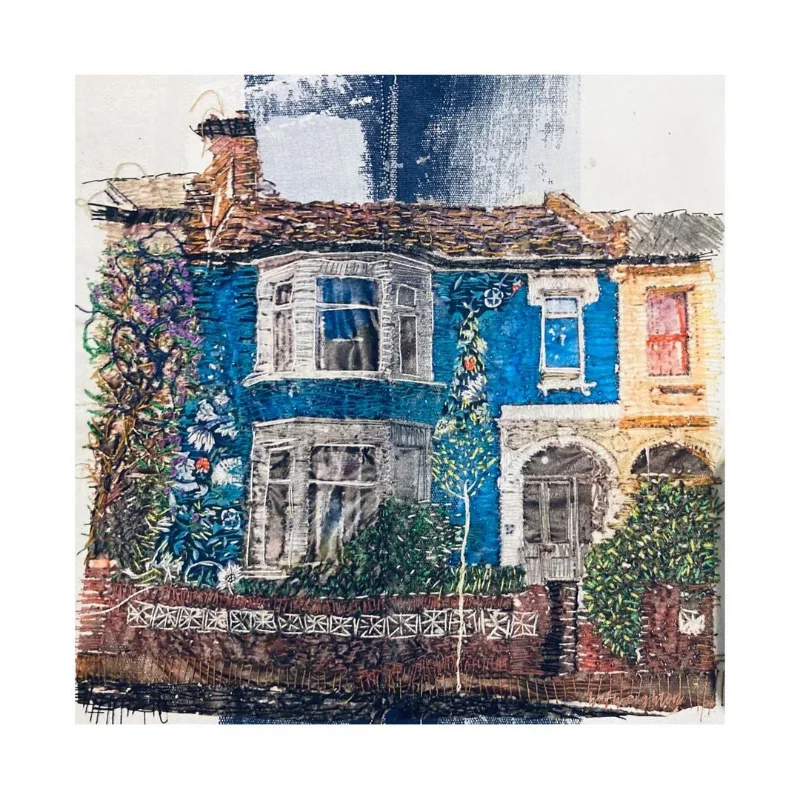
4. Marcia Eygabroat
An accomplished quilt artist with over two decades of experience, Marcia Eygabroat is known for her innovative Architectural Quilt construction technique. Marcia has successfully merged traditional quilting methods with modern technology, creating a unique style that she refers to as “puzzle piecing.” This technique involves meticulously cutting commercial cotton fabrics into tiny pieces and fusing them together to form detailed and vibrant quilted artworks.
Marcia’s quilts cover a broad spectrum of artistic styles and subjects, ranging from architectural scenes to nature-inspired, abstract, and realistic designs. Her keen eye for detail, coupled with her masterful use of colour and value, allows her to effectively convey light, shadows, and intricate details in her pieces. Each quilt begins with a photograph, which she then manipulates using Photoshop to design the final piece, demonstrating her ability to transform a simple image into a stunning quilted masterpiece.
Her works have been featured in numerous prestigious exhibitions and publications. Notably, Marcia has received accolades from esteemed shows such as the Brigham City Museum of Art & History in Utah, the AQS Quilt Exhibition in Nashville, the Houston International Quilt Festival, and the Schweinfurth Memorial Art Center. Her quilt “Time for Tea on the Veranda” won the “Excellence in Workmanship” award at the Expressions The Art Quilt show in Colorado, and her piece “Planting Time II” earned a first-place blue ribbon at the Quilts=Art=Quilts show at the Schweinfurth Memorial Art Center.
Marcia’s dedication to her craft and her innovative approach to quilt making continue to inspire and captivate audiences, solidifying her place as a distinguished figure in the world of quilt artistry.
Follow Marcia Eygabroat
Website: https://www.quiltedartworks.com/gallery/architectural-quilts/
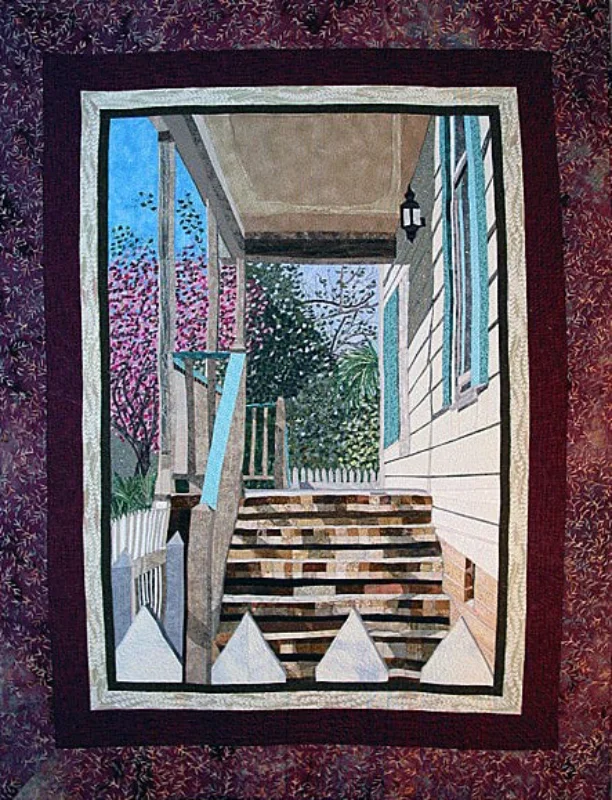
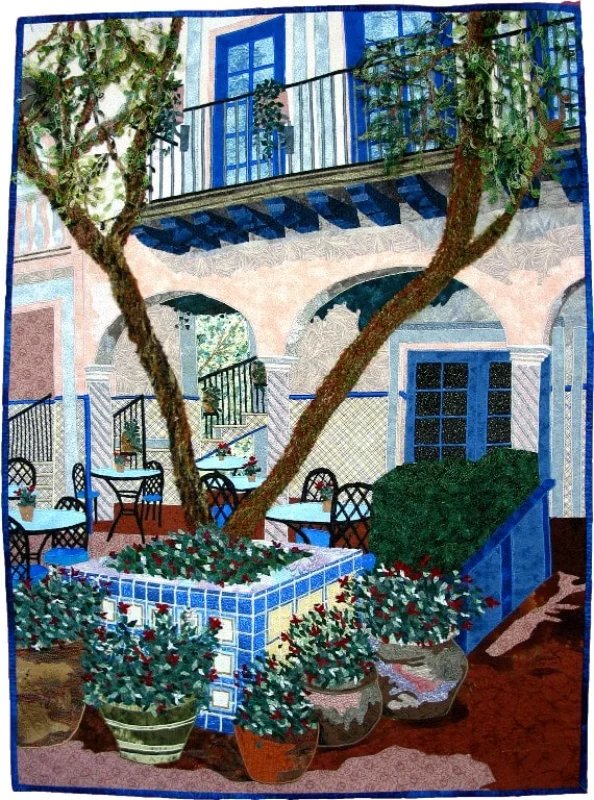
5. Maria Zamyatina
Embroidery artist Maria Zamyatina has a unique and captivating way of preserving her travel memories. Instead of traditional postcards or photographs, she uses needle and thread to create intricate embroidered keepsakes of the many places she has visited. With experiences from 27 countries and 151 cities, Zamyatina’s work draws inspiration from a rich tapestry of global landmarks and architecture.
Her embroidery captures the essence of iconic locations, such as the striking blue and white houses of Santorini and the vibrant sunsets of Portugal. Zamyatina’s technique stands out for its innovative use of watercolour paint and metallic threads, which add depth and a special flair to her pieces. Her ability to transport viewers to these picturesque destinations is a testament to her skill and creativity.
In addition to her artistry, Zamyatina is passionate about teaching others how to create their own embroidered travel keepsakes. Through her online class with My Modern Met Academy, she shares her step-by-step process, guiding students on how to transform their travel memories into tangible works of art. Her Mixed Media Thread Painting class offers over three hours of instruction, making her techniques accessible to embroidery enthusiasts at any time.
Zamyatina’s achievements include not only her beautiful artwork but also her influence in inspiring others to think creatively about documenting their travels. Her unique approach and dedication to her craft have made her a distinguished figure in the world of embroidery.
Follow Maria Zamyatina
Website: https://ko-fi.com/birdo_embroidery
Instagram: https://www.instagram.com/birdo_embroidery/
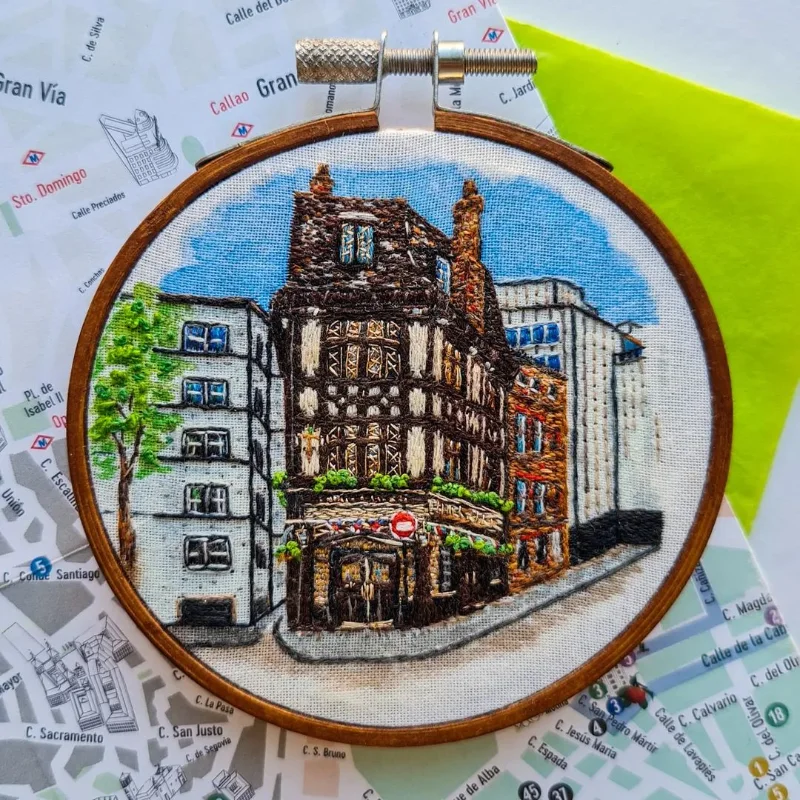
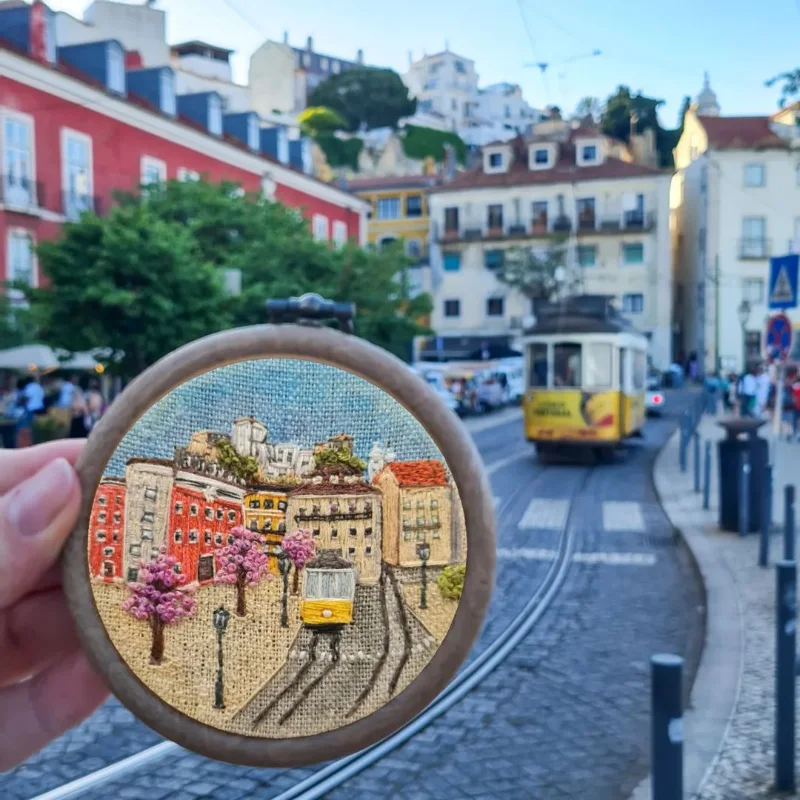
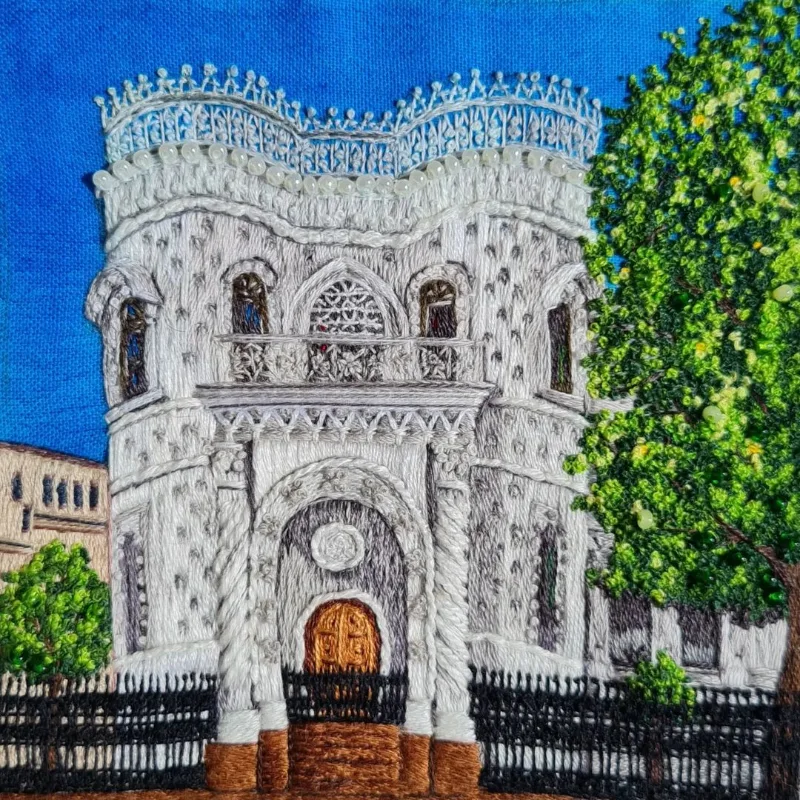
6. Do Ho Suh
Do Ho Suh is a renowned Korean-born artist whose work poignantly captures themes of transience, dislocation, and shifting identities through his intricate fabric installations. Born in Seoul, Suh has lived in various cities around the globe, including New York and London, and his art reflects this nomadic lifestyle. He is best known for his sheer fabric structures that meticulously replicate the architecture of his past dwellings. These installations evoke a sense of both rootedness and uprootedness, mirroring his personal experiences of moving and adapting to new environments.
Suh’s work has gained significant recognition and has been showcased in major exhibitions worldwide. Notably, his solo exhibition “Passage” at the Cincinnati Contemporary Arts Center (CAC) displayed predominantly new works that interact uniquely with the museum’s architecture, reflecting his ongoing exploration of transitional spaces. Additionally, his mid-career survey at the Museum of Contemporary Art San Diego included several of his renowned cloth installations, alongside videos and works on paper, further cementing his status as a pivotal figure in contemporary art.
One of Suh’s notable series, the “Hub” series, consists of architectural pieces that represent in-between spaces such as corridors, emphasising the transitional nature of his work. These pieces, characterised by multiple doors leading to different spaces, symbolise the journey of his life over the past two decades across Korea, the US, Germany, and England. Suh’s innovative approach and his ability to infuse personal narrative into his art make his installations a profound exploration of identity and place.
You can see his work until September 2024 at the National Galleries Scotland in Edinburgh.
Follow Do Ho Suh
Instagram: https://www.instagram.com/dohosuhstudio/
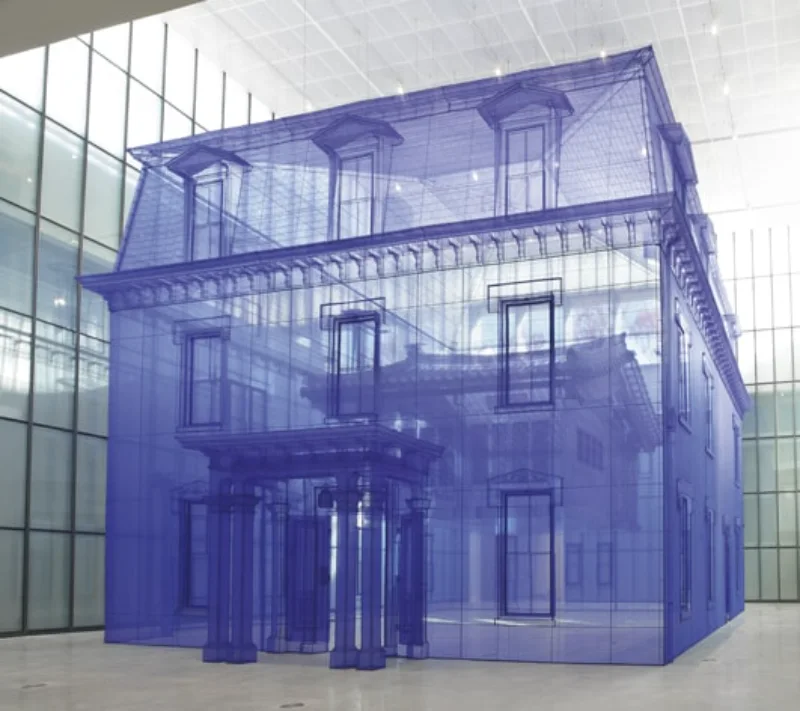
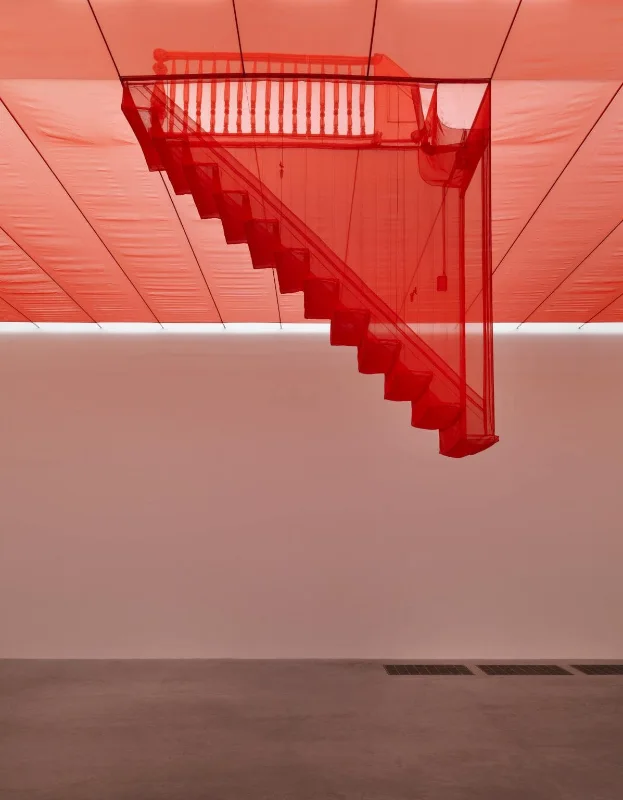

7. Victoria Potrovitza
Victoria Potrovitza is a contemporary artist renowned for her geometric abstract works that seamlessly blend hand embroidery with painting. With a background in architecture, she holds an MS Degree from UAUIM in Bucharest, Romania. Her architectural training continues to influence her art, lending it a structured yet innovative quality.
Potrovitza’s journey as an artist began with drawing and painting, but her creative exploration led her to textiles, particularly hand embroidery on canvas. Unlike traditional embroidery, her work incorporates bold, vibrant threads and layers of acrylic or gouache paints, creating dynamic and intuitive compositions. These pieces are designed to evoke emotions rather than convey specific concepts, drawing inspiration from both her architectural background and the universal symbols of tribal arts.
Throughout her career, Potrovitza has shifted from wearable art—featuring hand-painted silk showcased during NYC fashion weeks—to intricate hand-embroidered canvases. Her recent work is characterised by modern, geometric abstractions that prioritise colour and form. Each piece begins with a pencil sketch on a stretched canvas or heavy silk, but the final artwork evolves organically as she layers threads to achieve depth and vibrancy, creating both geometric and organic patterns.
Living and working in Lancaster, CA, Potrovitza’s art reflects a deep commitment to colour and abstract expression. Her ability to transform traditional textile techniques into contemporary art pieces has distinguished her as a visionary in the field. Her process, inspired by the structured world of architecture, has given her the confidence to embrace creative freedom, resulting in works that are both innovative and deeply personal.
Follow Victoria Potrovitza
Website: https://www.victoriapotrovitza.com/
Instagram: https://www.instagram.com/victoriapotrovitza/
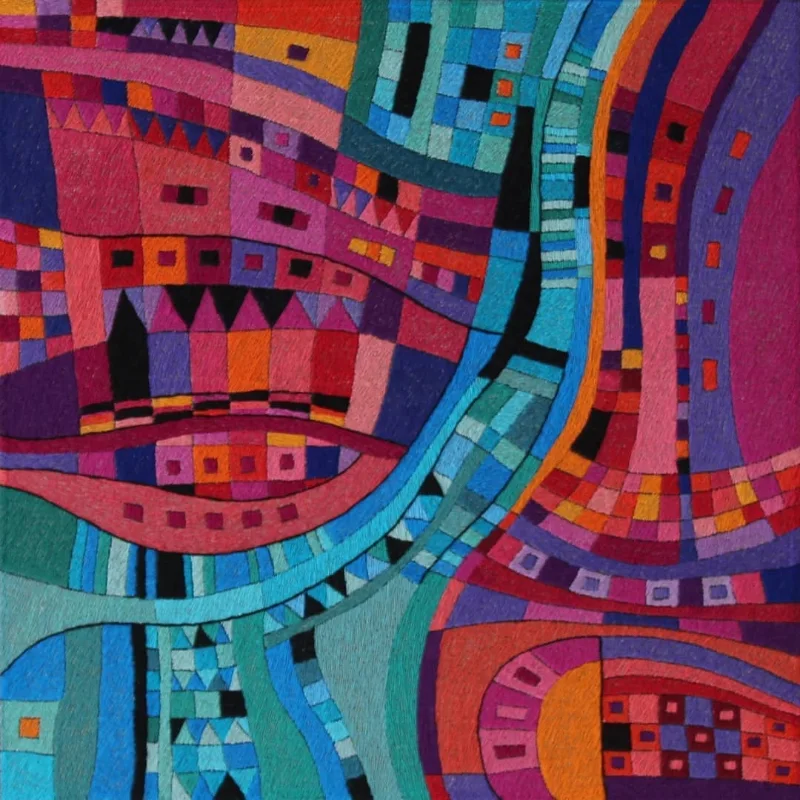

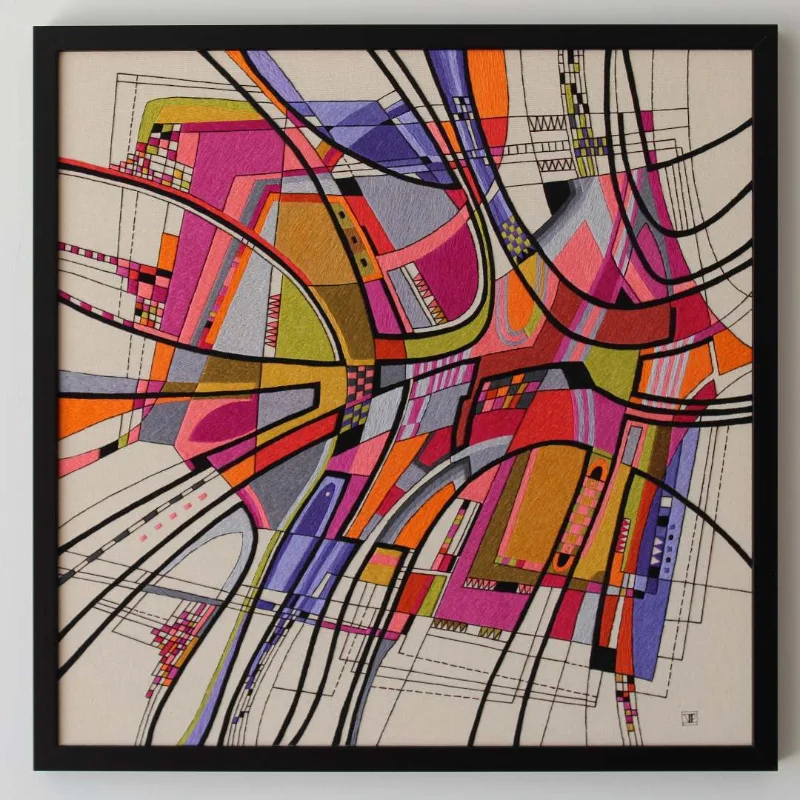
8. Elin Petronella
Swedish artist Elin Petronella and her husband, Charles-Henry, have turned their shared passion for embroidery and travel into a celebrated artistic journey. Their unique approach involves capturing architectural wonders from around the world through intricate embroidery, transforming their travel memories into tactile, stitched masterpieces.
Elin, who had been dedicated to embroidery before meeting Charles in Paris in 2016, inspired him to join her in this craft. With a background in fine arts and professional photography, Charles quickly adapted to embroidery, and the couple began creating beautiful pieces together. Their work is heavily influenced by the architecture they encounter on their travels, reflecting their deep appreciation for cultural and historical landmarks.
The couple employs various techniques, including straight stitch, split stitch, French knots, running stitch, backstitch, and satin stitch, often using DMC cotton floss on cotton canvas. They also incorporate elements like watercolour embroidery and thread-sketching, pushing the boundaries of traditional embroidery to create what they call “tactile drawings.”
Elin and Charles-Henry’s achievements include authoring the book “Mindful Embroidery: Stitch Your Way to Relaxation with Charming European Street Scenes” and establishing the Charles and Elin Academy. Through their online school students can learn how to embroider architectural scenes, embellish clothing, and create their own designs.
Their dedication to promoting embroidery as a form of relaxation and creative expression has made them influential figures in the modern embroidery community. Their combined talents and shared mission continue to inspire others to explore the soothing and artistic possibilities of embroidery.
Follow Elin Petronella
Website: https://charlesandelinacademy.com/p/embroidery-library-going-knots/
Instagram: https://www.instagram.com/petronella.art/
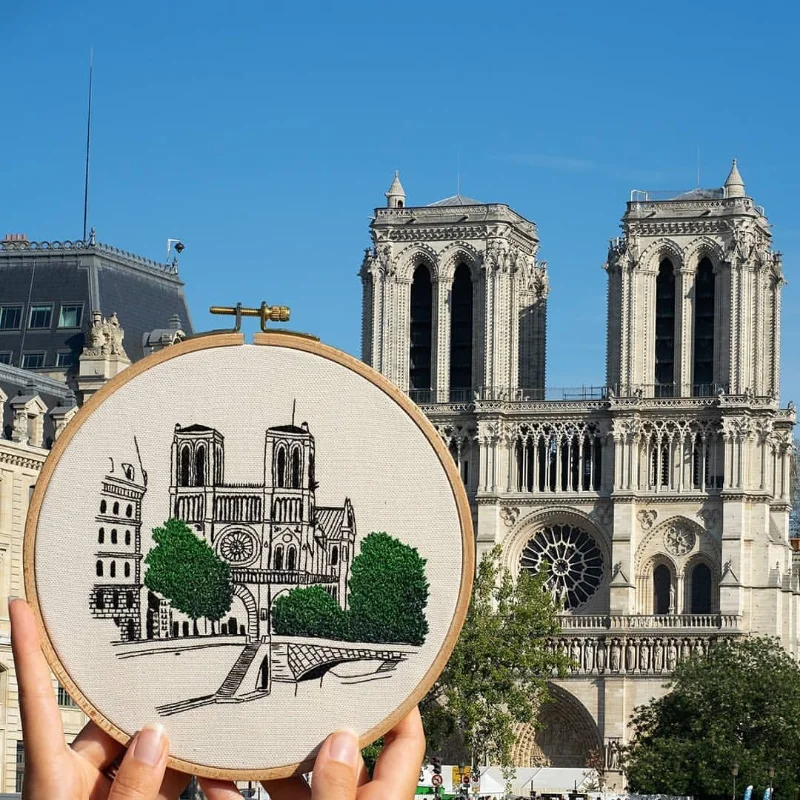
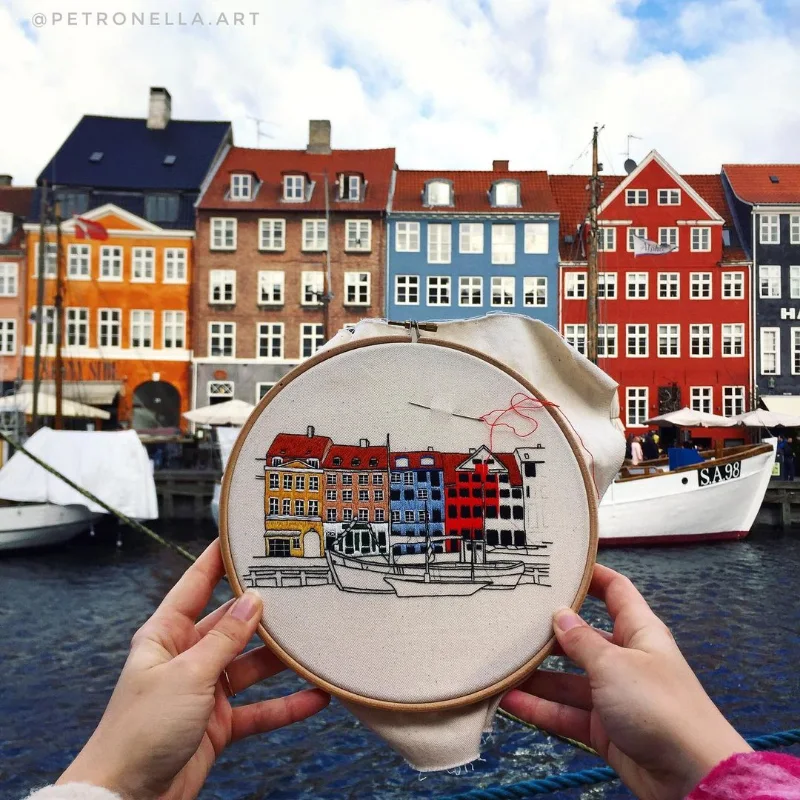

9. Kate Williams
Kate Williams is an innovative quilt artist whose work blends traditional textile techniques with modern artistic sensibilities. Specializing in large-scale, wall-hung quilts, Willams’ creations are distinguished by their depiction of imaginary architectural forms set against vivid, empty landscapes. Her style is reminiscent of a fusion between Giorgio de Chirico’s metaphysical paintings and the vibrant aesthetics of 1980s Miami.
Inspired by the concepts of artifice and illusion, as well as the playful yet unsettling qualities of postmodern architecture and 18th and 19th-century trompe l’oeil vistas, Willams’ quilts evoke a sense of eerie estrangement. Her use of long quilting lines creates a dynamic interplay between depth and the familiar padded surface of traditional quilts, enhancing the ambiguity and dreamlike quality of her pieces.
Willams prefers piecing over appliqué in her technique. She meticulously draws and cuts each element from linen union, assembling them into cohesive structures before layering with wool and cotton. The final step involves machine quilting, an industrialized process that complements the thematic content of her work.
Her recent series, Soft, explores the sculptural potential of quilts. Pieces like Soft Cell combine seductive pillows of fabric with shadowy elements, inviting viewers to ponder the juxtaposition of comfort and its underlying implications. This work aims to leave viewers mildly unsettled, engaging them on both visual and conceptual levels.
Achievements include her participation in notable exhibitions such as “Quilts: A Material Culture” at the Batsford Gallery in Hackney during London Craft Week 2023. Her unique approach to quilting continues to challenge traditional boundaries, making her a significant figure in contemporary textile art.
Follow Kate Williams
Instagram: https://www.instagram.com/kate_williams_studio/
Website: https://www.katewilliamsstudio.com/
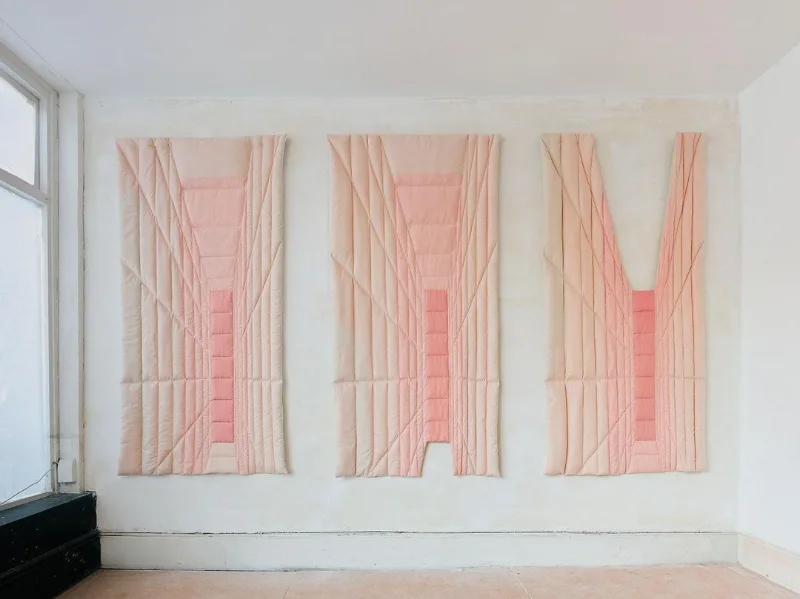

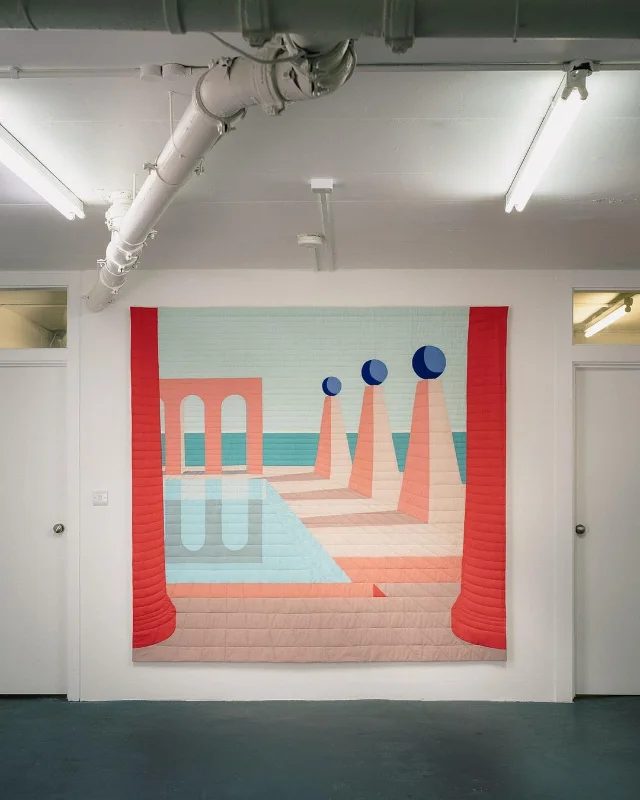
10. Ruth Chalk
Ruth Chalk specialises in knit and machine embroidery and her work is celebrated for her innovative and intricate designs that blend traditional craftsmanship with contemporary artistic expression. Drawing inspiration from nature, urban landscapes, and the intricate details of everyday life, Chalk’s work captures the beauty and complexity of her surroundings with remarkable precision and creativity.
What we love about her work is her ability to take seemingly urban buildings in Leicester like the Council offices and De Montfort House and transform them into life-like knitted structures that make you view them in an entirely different way. Ruth’s work won first prize in the Cank Street Gallery open exhibition, so Ruth is definitely on to watch.
Ruth Chalk continues to inspire and push the boundaries of textile art, demonstrating her amazing ability to create life-like art out of the seemingly ordinary.
Follow Ruth Chalk
Instagram: https://www.instagram.com/ruthchalktextiles/
